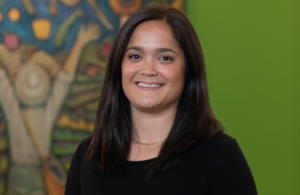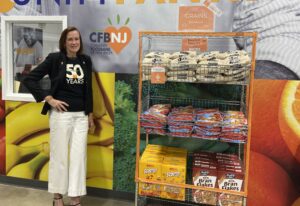The CEOs of our Food Bank CEO Roundtable considered how the results of the presidential election might impact charitable and federal food assistance in the coming years.
There was concern about the Farm Bill, which continues to be under debate (see our article here) and has important implications for how much federal funding will be put toward nutrition assistance. The pace of progress made toward universal school meals and the strength of other child nutrition programs like school lunch were among the items of concern. “There’s definitely a lot of trepidation about what the new administration will mean to policy at the federal level,” said Kristen Wild, President and CEO of St. Louis-based Operation Food Search.
The Food Group is preparing to be “a bit more defensive” in its policy strategy, said Sophia Lenarz-Coy, Executive Director. The Minneapolis-based food bank already was contemplating ways to enhance SNAP-like benefits at the state level, and has in the works a SNAP Challenge, which calls for local lawmakers to live on a SNAP budget for the three days before Thanksgiving. “Now it feels like we’re going to be raising awareness and momentum to defend against potential cuts,” she said.
CEOs acknowledged room for improved messaging. Katie Martin, PhD, CEO of More Than Food Consulting, noted a “big disconnect” between the policies meant to help the most vulnerable people and effective communication about those policies. “We need to do a better job of being on the front lines, listening to folks, and gathering feedback from those who are experiencing food insecurity,” Martin said.
Second Harvest Food Bank Santa Cruz County plans to be more strategic about reaching the large immigrant population throughout its agricultural community, said Erica Padilla-Chavez, CEO. Even before the election, the food bank had been picking up on fears in the community that immigrants would run the risk of deportation by attending food distributions. “That’s been the first order of business for us,” Padilla-Chavez said. “We’re doing a lot more marketing around that message of everyone is welcome.”
At Feeding Tampa Bay, post-election messaging includes combatting the notion that the philanthropic community is able to solve fundamental societal inequities. “It’s not,” said Thomas Mantz, President and CEO, who added that corporations as well as elected officials need to hear this message. “We are either feeding your colleagues or your customers or both,” he said. “And if you care about the long-term economics of the community and its viability, you’re going to have to rethink how a family or a household has the resources it needs to survive.”
At the same time, there was a recognition that food banks need to continue with the basic work of getting food out into the community. “People are in need. People are hungry,” said Eric Hodel, CEO at Midwest Food Bank, based in Normal, Ind.. “We’re going to go rescue food. We’re going to go procure food. We’ll bring it into our network and we’ll distribute it out to our agencies. We will just do what we do.”
Some food bank leaders were hopeful that donors would step up and help close the gap in funding that could result if various forms of federal assistance were worn away. Greg Silverman, CEO and Executive Director at West Side Campaign Against Hunger, noted that a few big donors had already made large contributions since the election and that he expected, as happened eight years ago, that donations would increase from high-net worth individuals.
But Lenarz-Coy wondered if such donations would be enough, especially if the new administration imposes trade tariffs, as promised, which would likely result in higher prices at the grocery store. “I just can’t envision a scenario where there’s enough private philanthropy to offset the potential of both the negative economic impacts and the dismantling of federal support programs,” she said.
Midwest Food Bank, which gets very little government funding, Hodel said, expects that its funding will potentially improve “as the economy comes back and more jobs are created.” The bulk of its funding, he said, comes from individuals and small to medium businesses that “do well and want to be philanthropic to their communities and take care of their neighbors.”
Leaders agreed that the framing of the pitch to donors was important. Donors are tired of hearing that “the sky is falling and we need more funding for food,” Martin noted. Mantz agreed that “the entire conversation needs to be reframed” away from need. Rather, “this is a solid investment strategy to make sure that everyone in a community thrives, because when that happens, the entire community is lifted.”
Mantz noted that Feeding Tampa Bay has grown its productivity seven- to eight-fold over the past ten years, yet it is further behind in terms of meeting the need. “The ‘sky is falling’ fundraising schematic only has so much life in it, and it’s too dependent upon circumstances, as opposed to the ongoing challenge that we have,” he said. “The ‘need’ conversation is not one that’s getting us anywhere.”
Looking forward, food banks want to lean into their strengths as they face the future. Gleaners Food Bank of Indiana, for example, has identified its “superpower” as acquiring food on a massive scale, said CEO Fred Glass. That capability, along with its central location, supports its operation of a food-distribution facility, Fresh Connect Central, which serves Gleaners’ 300 pantries, as well as about 100 food banks in 38 states. It also positions Gleaners to be a “one-stop provider for healthcare organizations, insurers and others,” Glass said, as the food bank seeks to fulfill its ambitions in Food as Medicine. – Chris Costanzo
Like what you’re reading?
Support Food Bank News









